This column is by my brilliant buddy, Randy Enos about his years teaching illustration.
Email Randy Enos Visit Randy’s archive –Daryl
Over the years, I have taught at many art schools including Parsons, Syracuse, Hartford, School of Visual Arts, Fashion Institute in New York, Rhode Island School of Design, Philadelphia School of the Arts and others. My longest sustained teaching was at Parsons in New York for 8 years.
The one common thread I noticed among students was that they didn’t know much of anything about our profession which they were supposedly interested in pursuing. They hadn’t looked at much illustration or cartooning and they didn’t know the names of the star practitioners of those fields. I always have found that to be peculiar. I’m sure that students of say, ballet, know the superstars of ballet; or students of music probably know the major musicians in the part of the field they are studying.  I’m sure that students of painting or sculpture have their favorite painters or sculptors. But, not students of illustration. Once you get past Norman Rockwell, they don’t know any of the stars unless they have just had a visiting lecture from one of them. When you teach illustration or cartooning, you start at ground zero; there are no reference points, just a blank slate. I once opened a class at Syracuse with, “Good morning, I’m Milton Glaser.” I didn’t raise an eyebrow.
I’m sure that students of painting or sculpture have their favorite painters or sculptors. But, not students of illustration. Once you get past Norman Rockwell, they don’t know any of the stars unless they have just had a visiting lecture from one of them. When you teach illustration or cartooning, you start at ground zero; there are no reference points, just a blank slate. I once opened a class at Syracuse with, “Good morning, I’m Milton Glaser.” I didn’t raise an eyebrow.
In my 8 years at Parsons, I generally taught two classes a week. It took Murray Tinkelman, the head of illustration at that time, five years to talk me into teaching. I kept saying,” I’ve only been in the business 10 years, how can I know enough to be able to be a teacher?” But, he wore me down and he had created a special course at that time called “Sequential Illustration” which I was to teach along with a “Conceptual Illustration” course. The conceptual course dealt with the “concepts” or ideas part of the process rather than drawing or perspective or design. At that point in time, illustration was a conceptual business rather than in previous times when it was a narrative, story telling process. We were in the era of illustrating abstract ideas for the business magazines like Business Week, Time, Fortune etc., rather than illustrating Indians attacking a wagon train for The Saturday Evening Post. We were illustrating articles on the falling stock market or the rise in childhood diseases or the latest fad in cooking.
The “Sequential Illustration” course was to be taught by three teachers, each teaching for a third of the semester. The course focused on illustration that was realized in multiple images such as in children’s books, animation, comic strips etc. I dealt with book illustration and multiple- picture magazine or newspaper illustrations in my third of the semester. Dick Giordano (Batman etc.) handled the comics part of the program and noted animator, Howard Beckerman handled the animation part. A little later on they created a third course that I was a part of which was just an animation course wherein Howard and I split the year in half. I did the first part dealing with designing and storyboarding and Howard did the last part and took the students through actually animating and filming animation sequences.

Sometimes I would bring into my classes, actual assignments that I had worked on myself so that students had the real thing to deal with concept-wise. One time, I received an assignment from Emergency Medicine magazine just before going to class so I gave them the same assignment with the same time frame I had to do it in. I told them that I would bring in my finished illustration a week later and they were to bring in theirs. One student said, “What if our illustration is better than yours will you take ours to the client instead of yours?” I, of course replied, “Your illustration isn’t going to be better than mine!” So… even though this particular illustration wasn’t paying very much, I spent all week doing an elaborate, detailed picture just to show the students what they should aim for. Another thing that I did was to bring in some of my art directors from time to time. I tried to give the students a real taste of the business.

This sounds like an exaggeration, but it actually happened. I told the students one day that most of the realist illustrators traced photographs. I made the mistake of mentioning Norman Rockwell in that group. One of my students was so horrified that his idol traced photographs that he went over to the window, climbed out on the ledge and threatened to jump. I calmed him down by explaining that Rockwell was a splendid draftsman who had worked from live models for years before resorting to working from photographs due to the pressures of deadlines. I told him that those pictures could never come out as well if he didn’t know how to draw like a master.
Many of my students went on to stellar careers in illustration such as Victor Juhasz (caricaturist, war correspondent, Rolling Stone illustrator etc.) and Peter de Seve (New Yorker covers, children’s books, character designer for Bug’s Life, Robots, 4 Ice Age films and many others).
I remember one assignment I gave my animation class and that was to design and storyboard an opening for a TV special. I wanted to pick a subject that would be fairly easy for them to research. I picked the Beatles. I figured they’d have no problem finding info, photos and ideas for a project like this. One boy in class said, “You know we don’t know very much about the Beatles, it’s kind of before our time!” Another kid said, “Oh, I know the Beatles, I heard of them; they had a few good tunes!” at which point, I screamed “A FEW GOOD TUNES? A FEW GOOD TUNES?”
A few weeks ago, my son told me that his friend, a guitar teacher, had a student who was shocked to find out that Paul McCartney was in a band BEFORE Wings.
When I would finish my class at Parsons, I often would go across the street and have dinner with a fellow teacher, Burne Hogarth of Tarzan fame. One time, I reminded him of an incident told to me by a friend who had been one of his students way back at the School of Visual Arts before it was called the School of Visual Arts and was called “The Cartoonists and Illustrators School”. One of his students asked him one day why Tarzan was always pointing his finger. Hogarth had this characteristic pose that he would often use of Tarzan with his right arm extended out and his finger pointing. Hogarth answered, “He’s pointing at my critics and saying, can you draw as well?”
I’ll end on this note … A FEW GOOD TUNES???
Email Randy Enos Visit Randy’s archive
We need your support for Cagle.com! Notice that we run no advertising. We depend entirely upon the generosity of our readers to sustain the site. Please visit Cagle.com/heroes and make a contribution. You are much appreciated!
Read many more of Randy’s cartooning memories:
The Gray Lady (The New York Times)
Man’s Achievements in an Ever Expanding Universe
The Smallest Cartoon Characters in the World
Brought to You in Living Black and White
Art School Days in the Whorehouse
The Card Trick that Caused a Divorce
8th Grade and Harold von Schmidt
The Funniest Man I’ve Ever Known
Read “I’m Your Bunny, Wanda –Part One”
Read “I’m Your Bunny, Wanda –Part Two”
Famous Artists Visit the Famous Artists School

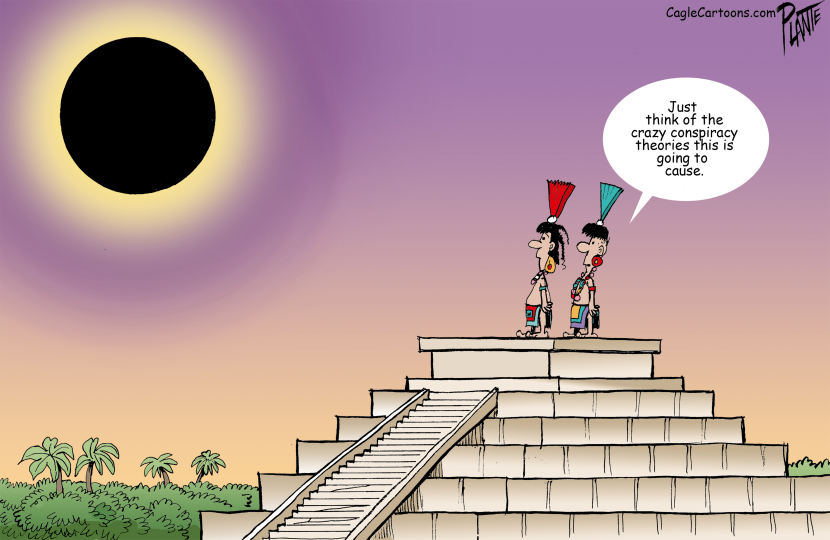
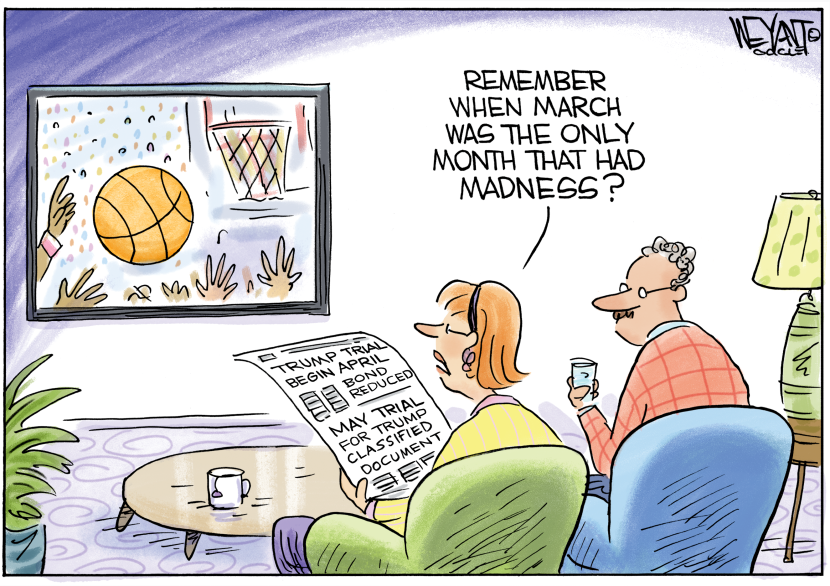

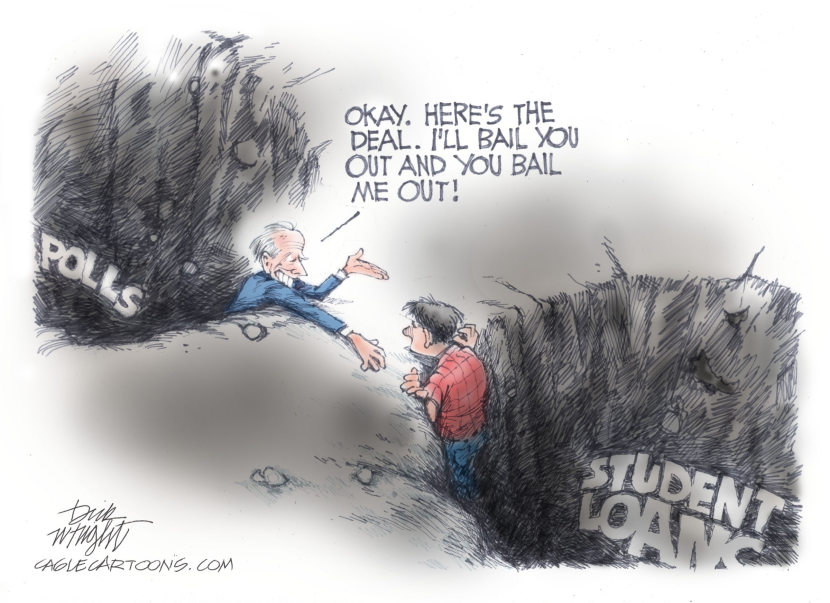
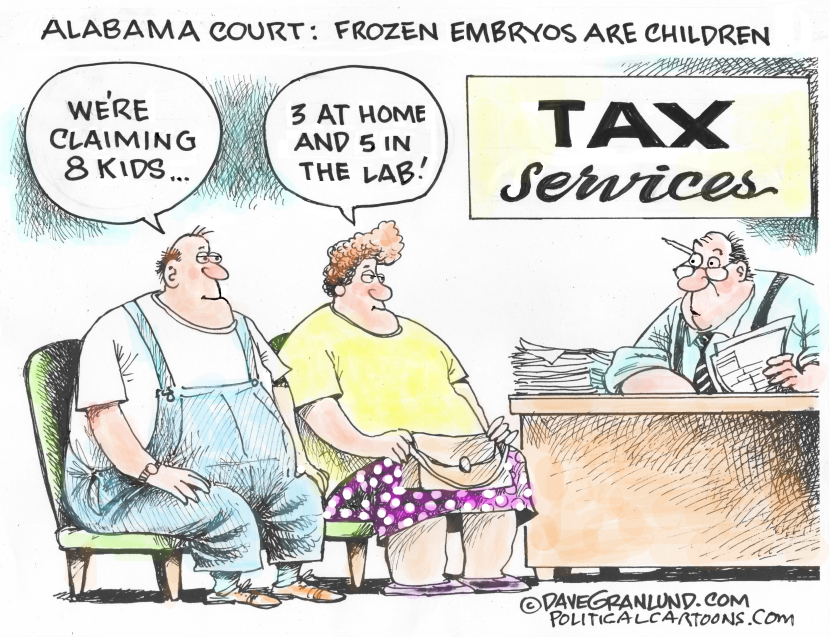
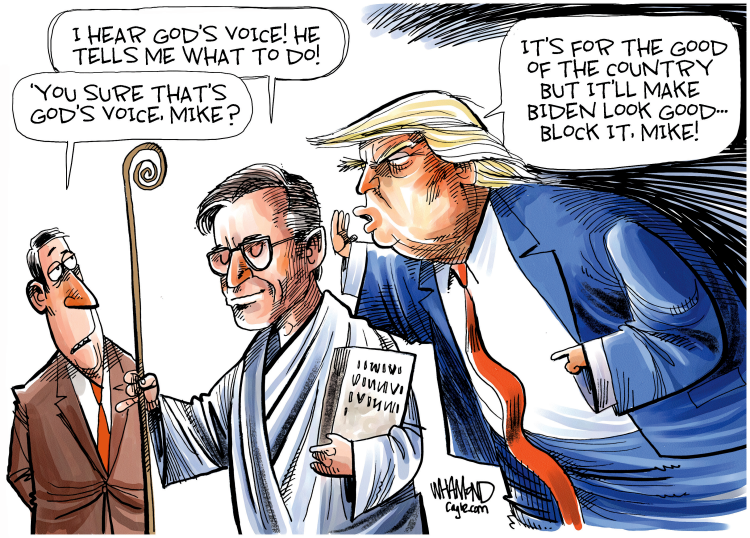
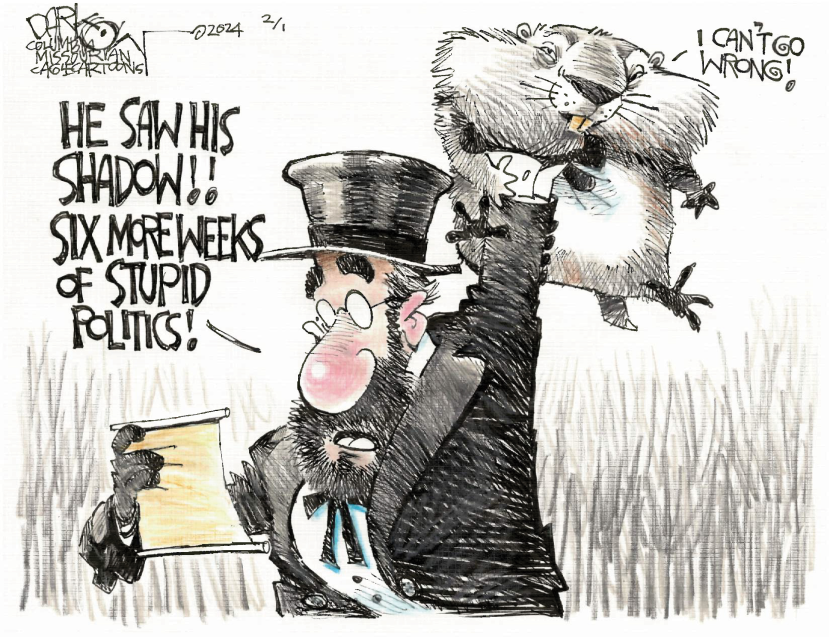
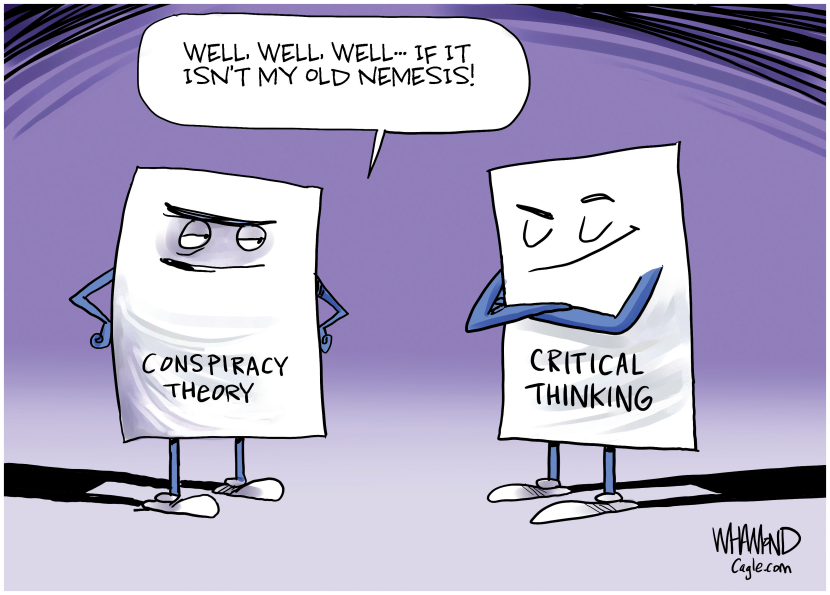
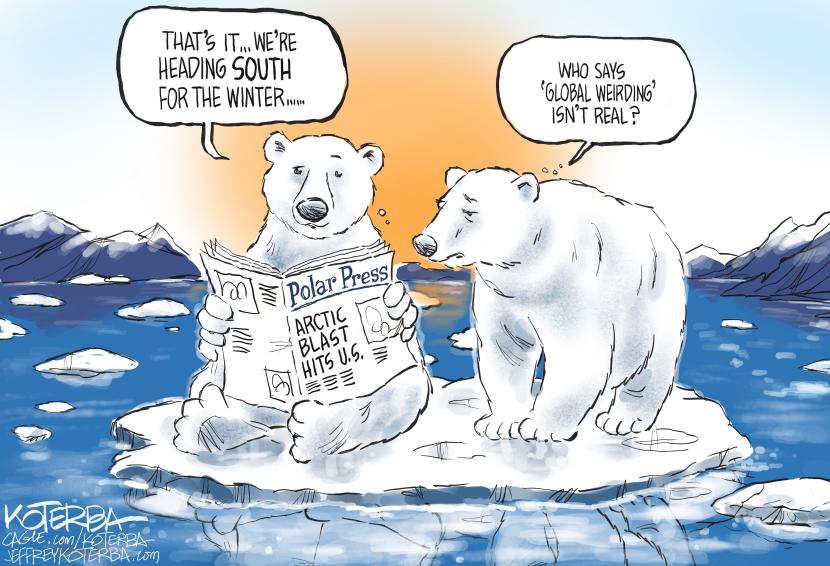

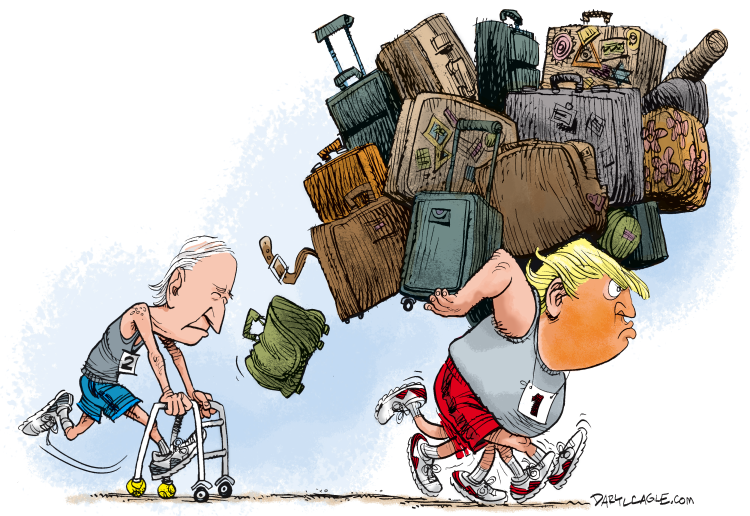


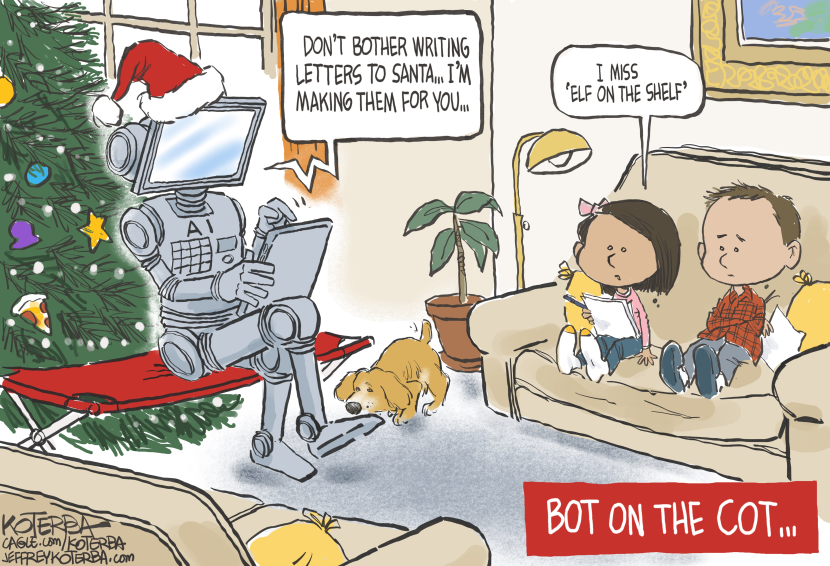
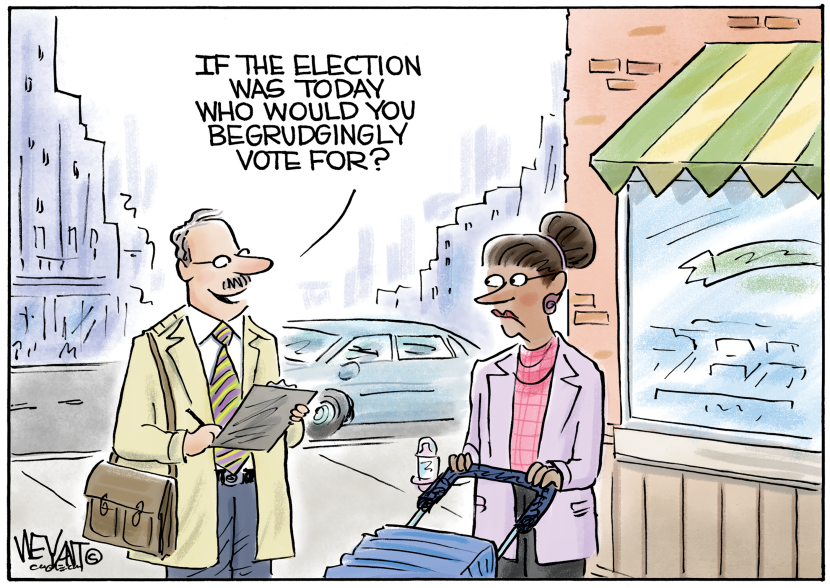







 I started illustrating for them, they instituted their Funny Pages. They asked me and a goodly number of other cartoonists to come up with some strips that would run every month. My contribution was Chicken Gutz. He was a little man who wore a tall black hat upon which stood a bird. The bird was never named and functioned as a spokesman (or spokesbird) commenting on and criticizing the various goings on that unfolded below him. The little man in the hat was totally unaware of the bird but the bird was certainly aware of the man.
I started illustrating for them, they instituted their Funny Pages. They asked me and a goodly number of other cartoonists to come up with some strips that would run every month. My contribution was Chicken Gutz. He was a little man who wore a tall black hat upon which stood a bird. The bird was never named and functioned as a spokesman (or spokesbird) commenting on and criticizing the various goings on that unfolded below him. The little man in the hat was totally unaware of the bird but the bird was certainly aware of the man.

 I got a lot of fan mail on the strip even years and years after it had ceased publication. I also got presents from fans like a 16” high stained glass replica of Mr. Gutz. I got a little stuffed Chicken Gutz doll, an embroidered Gutz and also a denim shirt with a large Gutz embroidered on the back. I got an actual laboratory slide of chicken guts and some sort of a partial rubber face (medical?) and a big set of colorful Mexican cards that have pictures of animals, humans and objects with the Spanish names. I lined the doorway of my studio with them. My biggest fan was a girl named Snooki that wrote me voluminous tomes. She was very creative sometimes writing in mirror image. I never met Snooki but I was privy to every turn in her life from being a Black Oak Arkansas groupie to finally a married woman with a daughter. Snooki wrote to only three people, Charles Manson, David Bowie and me. She threatened to come to visit me a few times but never did. She phoned me once or twice. I actually heard from her a couple of years ago.
I got a lot of fan mail on the strip even years and years after it had ceased publication. I also got presents from fans like a 16” high stained glass replica of Mr. Gutz. I got a little stuffed Chicken Gutz doll, an embroidered Gutz and also a denim shirt with a large Gutz embroidered on the back. I got an actual laboratory slide of chicken guts and some sort of a partial rubber face (medical?) and a big set of colorful Mexican cards that have pictures of animals, humans and objects with the Spanish names. I lined the doorway of my studio with them. My biggest fan was a girl named Snooki that wrote me voluminous tomes. She was very creative sometimes writing in mirror image. I never met Snooki but I was privy to every turn in her life from being a Black Oak Arkansas groupie to finally a married woman with a daughter. Snooki wrote to only three people, Charles Manson, David Bowie and me. She threatened to come to visit me a few times but never did. She phoned me once or twice. I actually heard from her a couple of years ago.
 We had an attractive youngish couple as landlords. The woman seemed delighted to have all these young men at her rooming house and she was a bit flirtatious. Eventually, she had an affair with one of the other art students that was living there.
We had an attractive youngish couple as landlords. The woman seemed delighted to have all these young men at her rooming house and she was a bit flirtatious. Eventually, she had an affair with one of the other art students that was living there.




 WHOOOOOSH… right over the kid’s head.
WHOOOOOSH… right over the kid’s head.
 Shortly after I had joined the Lampoon family, I was asked to contribute a comic strip to their new Funny Pages. My strip Chicken Gutz went on for many years. Occasionally I would throw in additional comic strips like my As The Tears Jerk which was a kind of soap opera strip and Specks-the smallest cartoon characters in the world which was a tiny strip consisting of tiny spots which talked to each other.
Shortly after I had joined the Lampoon family, I was asked to contribute a comic strip to their new Funny Pages. My strip Chicken Gutz went on for many years. Occasionally I would throw in additional comic strips like my As The Tears Jerk which was a kind of soap opera strip and Specks-the smallest cartoon characters in the world which was a tiny strip consisting of tiny spots which talked to each other.
 e print in our office, it was pretty poor in quality. The orange beverage was looking like brownish mud and the other two weren’t much better.
e print in our office, it was pretty poor in quality. The orange beverage was looking like brownish mud and the other two weren’t much better. Pablo hired me because I knew absolutely nothing about film production, animation etc.. He liked my crazy off-beat style and he wanted someone who was a film virgin because he didn’t want to do anything ordinary or like anything anybody else was doing.
Pablo hired me because I knew absolutely nothing about film production, animation etc.. He liked my crazy off-beat style and he wanted someone who was a film virgin because he didn’t want to do anything ordinary or like anything anybody else was doing. Kubrick said I should also be prepared to spend two years in England during shooting. He told me to think about it and I handed the phone back to Pablo. I told Kubrick the next day that I couldn’t do it because I had just bought a house and I was just beginning to start my job with Pablo etc. etc.. I didn’t know much about this director who was just going to make a science fiction movie… big deal. I did suggest some friends for the job who also turned it down (not enough money).
Kubrick said I should also be prepared to spend two years in England during shooting. He told me to think about it and I handed the phone back to Pablo. I told Kubrick the next day that I couldn’t do it because I had just bought a house and I was just beginning to start my job with Pablo etc. etc.. I didn’t know much about this director who was just going to make a science fiction movie… big deal. I did suggest some friends for the job who also turned it down (not enough money). When I was a tadpole, my family subscribed to The Saturday Evening Post. Each week when it arrived at our house, I would have my little sister take it, before I could see it, and stand across the room from me and turn the pages slowly as I named off each illustrator and cartoonist recognizing them by their styles. As I grew older and read more and more about these artists in books and magazines, I found a common thread. An awful lot of them lived in Westport, Connecticut. Curious!
When I was a tadpole, my family subscribed to The Saturday Evening Post. Each week when it arrived at our house, I would have my little sister take it, before I could see it, and stand across the room from me and turn the pages slowly as I named off each illustrator and cartoonist recognizing them by their styles. As I grew older and read more and more about these artists in books and magazines, I found a common thread. An awful lot of them lived in Westport, Connecticut. Curious!
